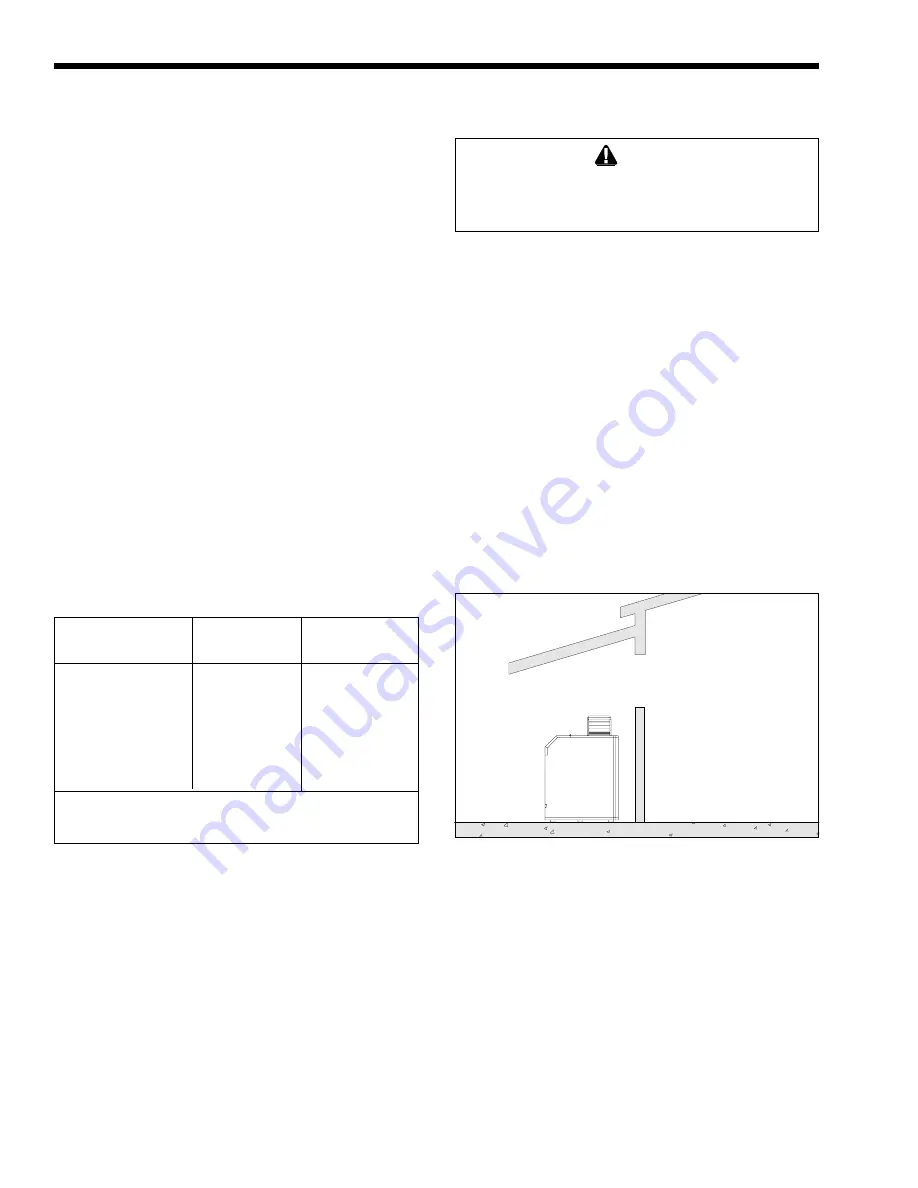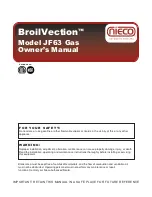
Page 4
LAARS HEATING SYSTEMS
SECTION 2.
Installation Instructions
2A. General Information
Install the Mighty Max HH boiler in accordance
with the procedures in this manual (or the Laars
warranty may be voided), local codes, and ordinances.
In the absence of such codes, install the heaters in
accordance with the latest edition of the National Fuel
Gas Code, ANSI Z223.1/National Fire Protection
Association (NFPA) 54. In Canada, the installation
must be in accordance with CAN1-B149.1 or .2 and
local codes. The authority having jurisdiction may
require the installation be in accordance with the
American Society of Mechanical Engineers (ASME)
Safety Codes for Controls and Safety Devices for
Automatically Fired Heaters, CSD-1, and in Canada,
Canadian Gas Association (CGA) 3.3. Any changes to
the boiler, its gas controls, gas orifices or wiring may
void the warranty. If field conditions require change,
consult the factory.
The Mighty Max HH boiler is designed-certified
for installation on a combustible floor. Do not install
the boiler directly on carpeting.
2B. Boiler Placement
Clearance From
Indoor
Outdoor
Combustibles
Inches mm
Inches mm
Top
18
457
Unobstructed
Water Conn. Side
12
305
12
305
Opposite Side
6
152
6
152
Front
Alcove
Unobstructed
Rear
6
152
6
152
Vent
*6
*
152
—
Flooring
Combustible
Combustible
Service clearance = 24 in. (610mm) at front of boiler.
*1 in. (25mm) if double wall vent is used.
Table 2. Minimum Boiler Clearances
from Combustible Surfaces.
Locate the boiler to provide adequate clearances
on all sides for maintenance and inspection. There
must also be minimum distances maintained from
combustible surfaces (See Table 2).
The boiler must be isolated or otherwise
protected from any source of corrosive chemical
fumes, such as trichlorethylene, perchlorethylene,
chlorine, etc. Install the boiler so that the gas ignition
system components are protected from water
(drippings, spraying, rain, etc.) during operation and
service.
2C. Installation of Outdoor Boilers
Caution
Outdoor installations are not recommended in
areas where the danger of snow blockage
exists.
1.
Locate the boiler to provide at least the
minimum clearances as listed in Section 2B,
“Boiler Placement.” HH boilers require an
outdoor terminal kit when installed outdoors (see
Section 6, Parts List).
2.
Do not locate the boiler in an enclosure or
through-wall recess. Avoid locations where wind
deflection off structures might cause down-draft.
When such wind conditions are possible, locate
the boiler at least 3 feet (.9m) from structures.
3.
Never install the boiler under any kind of roof
overhang. Do not locate the boiler below or
adjacent to any doors, windows, louvers, grills,
etc. which communicate in any way with an
inhabited area of a building, even though such
communication might be through another
structure such as a garage or utility room (see
Figure 2).
2D. Freeze Protection
Boiler installations are not recommended in
areas where the danger of freezing exists unless
proper precautions are made for freeze protection.
Maintaining a mixture of 50% water and 50%
properly inhibited HVAC glycol is the preferred
method of freeze protection for hydronic systems. (Do
not use automotive antifreeze.) This mixture will
protect the boiler to temperatures of about -35°F
(-37°C). To get the desired temperature rise across the
boiler when this mixture is used, increase the water
flow recommendation by 15%. Increase the head loss
requirement by 20%. Note: If your application does
WRONG
WINDOW
OR GRILL
INDOOR
ROOM
Figure 2. Incorrect Installation of Boiler.





































